Blue Dream
RSP 11006
Grower: Flora Vega
General Information
- Sample Name
- F20161201-04-1_01FEB2017
- Accession Date
- September 17, 2017
- Reported Plant Sex
- not reported
- Report Type
- StrainSEEK v2 3.2Mb
- DNA Extracted From
- Unknown
The strain rarity visualization shows how distant the strain is from the other cultivars in the Kannapedia database. The y-axis represents genetic distance, getting farther as you go up. The width of the visualization at any position along the y-axis shows how many strains there are in the database at that genetic distance. So, a common strain will have a more bottom-heavy shape, while uncommon and rare cultivars will have a visualization that is generally shifted towards the top.
Chemical Information
Cannabinoid and terpenoid information provided by the grower.
Cannabinoids
- THC + THCA
- 21.369%
- CBD + CBDA
- 0.03%
- THCV + THCVA
- n/a
- CBC + CBCA
- n/a
- CBG + CBGA
- 0.214%
- CBN + CBNA
- 0.019%
Terpenoids
- α-Bisabolol
- 0.001%
- Borneol
- n/a
- Camphene
- 0.003%
- Carene
- 0.%
- Caryophyllene oxide
- 0.%
- β-Caryophyllene
- 0.033%
- Fenchol
- n/a
- Geraniol
- 0.%
- α-Humulene
- 0.033%
- Limonene
- 0.012%
- Linalool
- 0.012%
- Myrcene
- 0.07%
- α-Phellandrene
- n/a
- Terpinolene
- 0.%
- α-Terpineol
- n/a
- α-Terpinene
- 0.%
- γ-Terpinene
- 0.%
- Total Nerolidol
- 0.003%
- Total Ocimene
- 0.002%
- α-Pinene
- 0.172%
- β-Pinene
- 0.041%
Genetic Information
- Plant Type
- Type I
File Downloads
The bell curve in the heterozygosity visualization shows the distribution of heterozygosity levels for cannabis cultivars in the Kannapedia database. The green line shows where this particular strain fits within the distribution. Heterozygosity is associated with heterosis (aka hybrid vigor) but also leads to the production of more variable offspring. When plants have two genetically different parents, heterozygosity levels will be higher than if it has been inbred or backcrossed repeatedly.
The ratio of reads mapped to Y-contigs to reads mapped to the whole Cannabis genome (Y-ratios) has been demonstrated to be strongly correlated with plant sex typing. This plot shows the distribution of Y-ratios for all samples in our database which were sequenced with the same method (panel or WGS) as this sample and where this sample falls in the distribution.
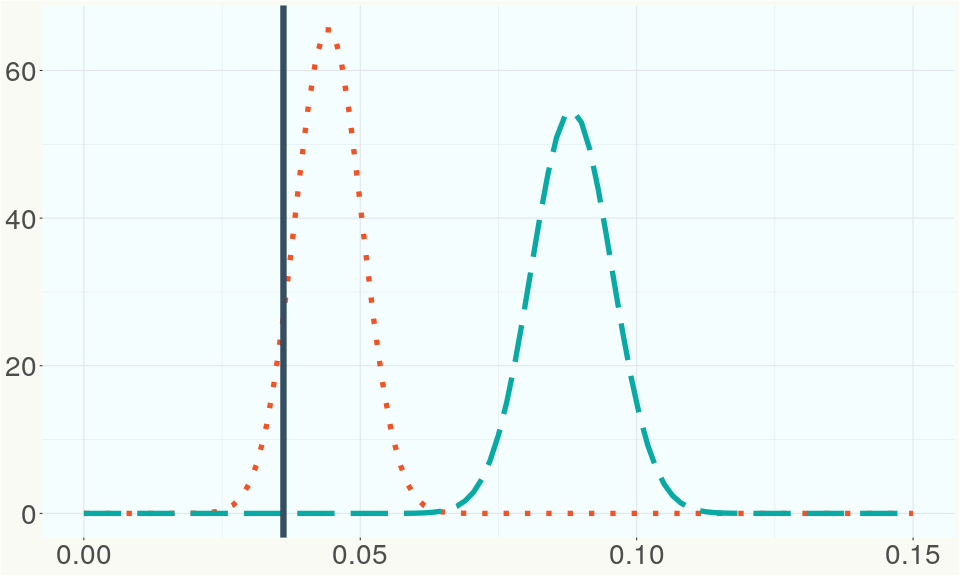
This chart represents the Illumina sequence coverage over the Bt/Bd allele. These are the three regions in the cannabis genome that impact THCA, CBDA, CBGA production. Coverage over the Active CBDAS gene is highly correlated with Type II and Type III plants as described by Etienne de Meijer. Coverage over the THCA gene is highly correlated with Type I and Type II plants but is anti-correlated with Type III plants. Type I plants require coverage over the inactive CBDA loci and no coverage over the Active CBDA gene. Lack of coverage over the Active CBDA and Active THCA allele are presumed to be Type IV plants (CBGA dominant). While deletions of entire THCAS and CBDAS genes are the most common Bt:Bd alleles observed, it is possible to have plants with these genes where functional expression of the enzyme is disrupted by deactivating point mutations (Kojoma et al. 2006).
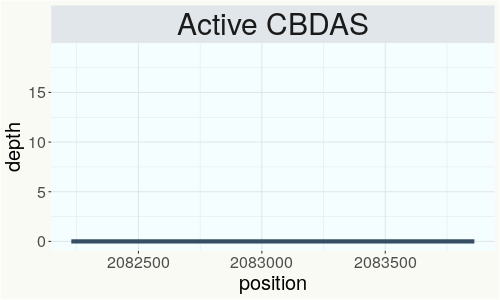
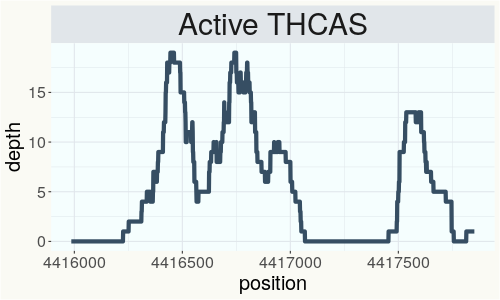
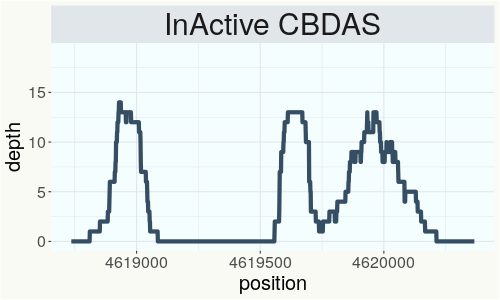
This chart represents the Illumina sequence coverage over the CBCA synthase gene.
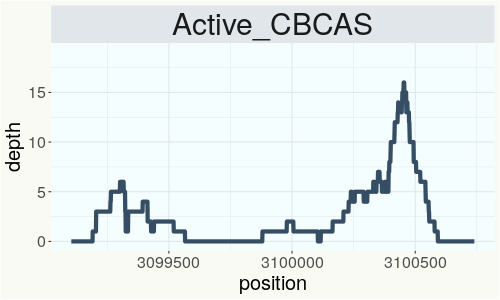
Variants (THCAS, CBDAS, and CBCAS)
No variants to report
Variants (Select Genes of Interest)
No variants to report
Nearest genetic relatives (All Samples)
- 0.005 Blue Dream (RSP11009)
- 0.006 Blue Dream (RSP11007)
- 0.007 Blue Dream (RSP11012)
- 0.007 Blue Dream (RSP11227)
- 0.007 Blue Dream (RSP11005)
- 0.007 Blue Dream (RSP11010)
- 0.008 Blue Dream (RSP11008)
- 0.008 Blue Dream (RSP11032)
- 0.009 Super Blue Dream (RSP11011)
- 0.009 Snoops Dream (RSP11031)
- 0.009 Snoops Dream (RSP11003)
- 0.009 Blue Dream (RSP11004)
- 0.009 Blue Dream (RSP11342)
- 0.010 Blue Dream (RSP11017)
- 0.013 Blue Dream (RSP11033)
- 0.104 Serious Happiness (RSP10763)
- 0.139 Golden Goat 2 (RSP10991)
- 0.148 Domnesia (RSP11184)
- 0.149 Doug s Varin (RSP11243)
- 0.154 UnObtanium (RSP11611)
Most genetically distant strains (All Samples)
- 0.417 80E (RSP11213)
- 0.410 CS (RSP11208)
- 0.410 Carmaleonte (RSP11207)
- 0.409 Cherry Blossom (RSP11328)
- 0.407 80E (RSP11211)
- 0.406 Cherry Blossom (RSP11311)
- 0.406 Feral (RSP11205)
- 0.395 Carmagnola (RSP11202)
- 0.389 Feral (RSP11206)
- 0.387 80E (RSP11212)
- 0.386 BagSeed (RSP12627)
- 0.381 Feral (RSP10890)
- 0.379 CS Indica (RSP11658)
- 0.375 Cherry Blossom (RSP11314)
- 0.374 Feral (RSP10892)
- 0.374 XBL1 (SRR14708207)
- 0.374 Feral (RSP10891)
- 0.371 R3in134 (SRR14708220)
- 0.371 R1in136 (SRR14708226)
- 0.369 Tiborszallasie (RSP11210)
Nearest genetic relative in Phylos dataset
- Overlapping SNPs:
- 76
- Concordance:
- 73
Nearest genetic relative in Lynch dataset
- Overlapping SNPs:
- 8
- Concordance:
- 8
Blockchain Registration Information
- Transaction ID
-
943bf672390906c5
630d60aee1b4cd20 7d98327b76784446 f983cb9431c5f8e5 - Stamping Certificate
- Download PDF (859.9 KB)
- SHASUM Hash
-
8a1cfd82742f9be10d5534b29d384831 bde3b993ed6aa834 7eeb9dddf3a80870